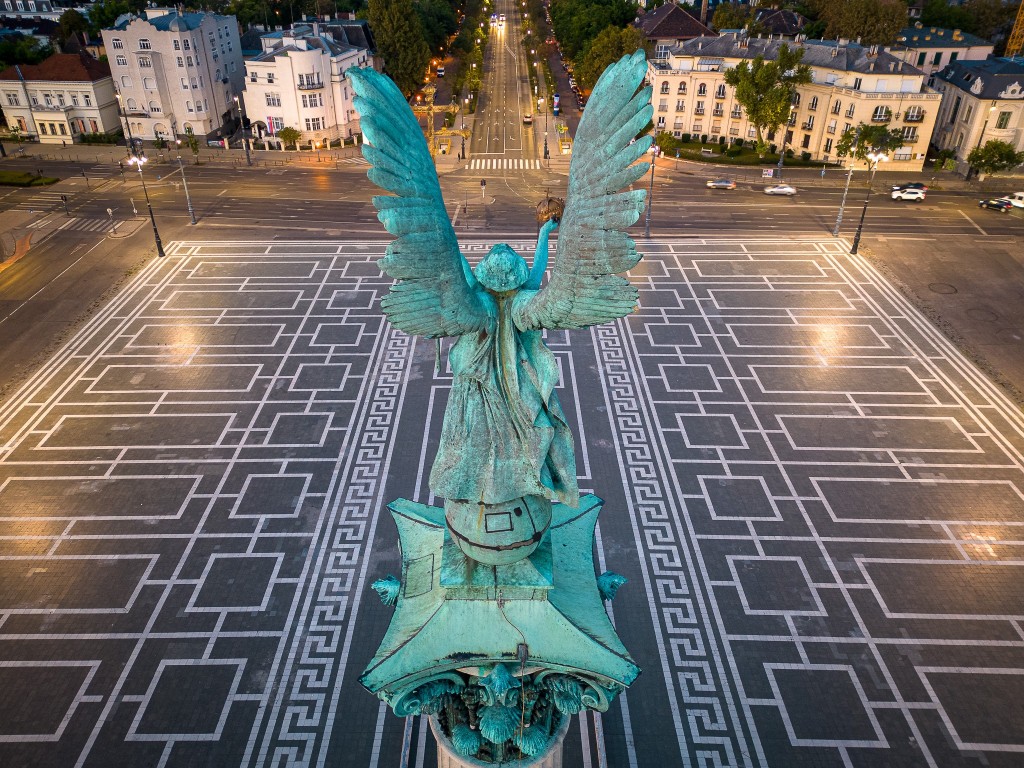Heroes’ Square, serving as the gateway to the City Park, is one of Budapest’s most iconic and most visited public spaces. The Millennium Monument rising at the end of Andrássy Avenue plays a central role with its 36-metre column topped by the Archangel Gabriel, holding the Holy Crown and the double cross: it stands as an emblematic symbol evoking the thousand-year history of Hungarian statehood. The seven mounted bronze statues at the base of the column commemorate the Magyar tribes led by Árpád, while the two semi-circular colonnades feature Hungary’s most notable historical figures from Saint Stephen to Lajos Kossuth.
The square is more than a visual experience as it reflects the country’s pivotal historical moments. It was the site of the reburial of Prime Minister Imre Nagy in 1989, when 250,000 people gathered here in memory of a major turning point in modern Hungarian politics. The Memorial Stone of Heroes, set into the paving as a decorative element, is not an unfamiliar piece of Hungarian historical consciousness: although not an actual grave, it honours the fallen of World War I and is cordoned off during state ceremonies. The artesian well operating beneath the square has been connected to the City Park’s thermal baths since the time of Árpád, while the metro stop behind the colonnade forms part of the first underground railway system in Europe, thus ancient glory blends with modern transport here in subtle harmony.

Cultural richness is further enhanced by the presence of the Museum of Fine Arts and the Műcsarnok/Kunsthalle flanking the square, where visitors can discover works from across continents – a true treat for those familiar with the world of Liget Budapest. The square is vibrant with life throughout the year: tourists, locals, photographers and chess enthusiasts come and go across its marble tiles, and the unique lighting in the evenings highlight the cultural depth of this place, which truly is “a gateway where the past meets the present.”